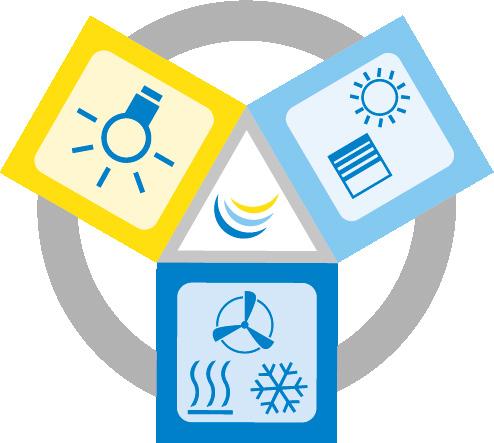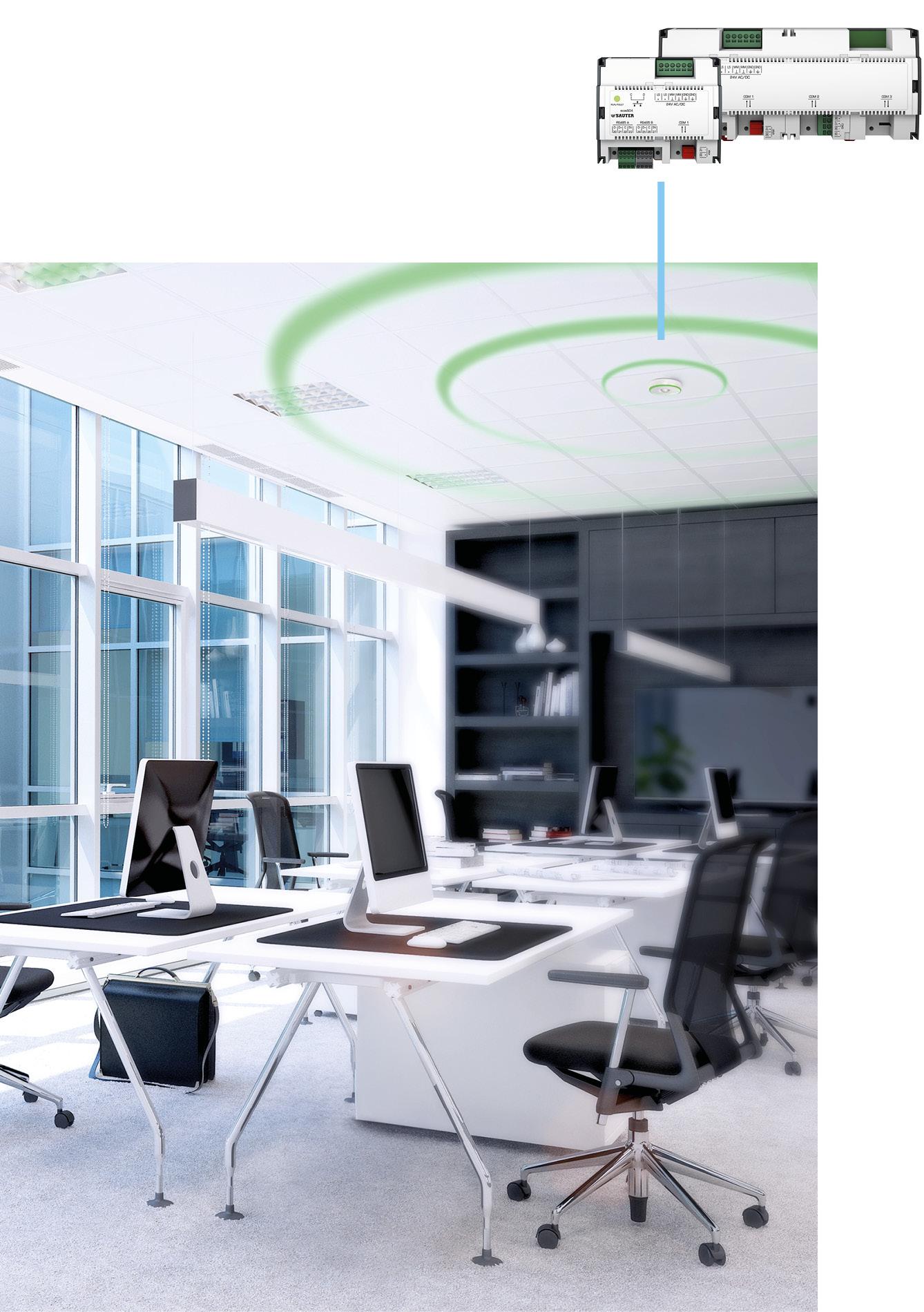
5 minute read
INTELLIGENT LIGHTING CONTROL - More than just light
Intelligent lighting control plays a key role in reducing energy consumption and increasing comfort in buildings. We put the spotlight on the latest developments, requirements and products that not only save energy, but also enhance comfort for building users.
The EU aims to achieve a zero-emission building stock by 2050. Lighting control is a fundamental part of this project due to the high proportion of energy consumed in buildings by lighting. A number of guidelines have been adopted for this, including compliance with ESG criteria (Environmental, Social, Governance), the EPBD (Energy Performance of Buildings Directive) and the EED (Energy Efficiency Directive).
Saving energy, increasing comfort
The new version of the EPBD, which came into force at the end of May 2024, calls for the installation of automatic lighting control systems in non-residential buildings by 31 December 2027. Solutions with energy-saving and comfort-enhancing functions, such as occupancy detection and zoning, are in demand.
Occupancy detection systems use presence sensors and motion sensors to detect the movement of people in buildings. This provides information about actual room occupancy and energy usage can be adjusted accordingly. Lights can be switched or dimmed automatically, for example, based on the daylight available and whether anyone is in the room or not.
Zoning is another function yielding energy savings and increasing comfort. Here, a building is divided into various independent zones that are controlled in line with their use and occupancy.
Lighting concepts and how they work
We humans and our biorhythms have always been influenced by light. As studies showed back in the 1970s, light – and not just natural daylight – greatly improves our well-being and boosts productivity. Providing optimal lighting is essential in buildings and a key factor in the indoor environmental quality standard (IEQ, see page 4).
Besides constant light control, intelligent solutions for regulating lights allow concepts such as Human Centric Lighting (HCL) to be implemented. Communicative lighting control solutions, devices with DALI interfaces, for example, are ideal for delivering these lighting concepts.

Human Centric Lighting
The Human Centric Lighting concept provides room occupants with light of the optimum brightness and colour at all times. By automatically adjusting the brightness and shade, the light can mimic the daylight over the course of the day. This increases wellbeing, promotes health and improves concentration and performance.
Dali
DALI (Digital Addressable Lighting Interface) enables each single light source to be individually addressed and controlled. The illumination can therefore be adapted flexibly to users' needs and ambient conditions. The universal capability to integrate motion and light sensors also helps to save energy with automatic application control. This makes an important contribution to fulfilling ESG criteria and EPBD stipulations. Alongside enhanced functions for operating devices, the cross-manufacturer DALI-2 standard also defines the requirements for controllers and sensors. These are in line with the international IEC 62386 series of standards.

Holistic concept, smart implementation
At SAUTER, lighting control solutions are part of the integrated room automation concept. The concept includes heating, ventilation and air-conditioning as well as lighting and shading – all working in harmony to ensure the best possible energy efficiency and comfort.
In hot weather, for example, automatic air conditioning control keeps indoor temperatures down, always adapting to the prevailing temperature situation. At the same time, automated shading systems such as blinds and awnings work in conjunction with the air conditioning control system to maintain a constant room temperature. This also ensures a pleasantly lit workplace by preventing glare from the sun and reduces the energy required for cooling. The automated lighting adapts the colour of the light to the natural course of the day (tunable white), thereby fostering well-being (Human Centric Lighting).
Energy efficiency and comfort with ecos and viaSens
SAUTER ecos is a versatile room automation system for integrating automatic control of the heating, ventilation, air conditioning and lighting in rooms. This integration avoids the use of artificial lighting when rooms are unoccupied or sufficient daylight is available. There is also no unwanted heating of rooms due to the sun shining in. Integration offers distinct advantages for the air conditioning too, i.e. rooms are no longer simultaneously cooled (e.g. by ventilation) and heated (e.g. by radiators).
Automation
The ecos504/505 room automation station now features the latest functional enhancements of DALI-2. DALI-2 sensors and buttons can therefore be efficiently integrated and additional energy consumption, diagnostics and maintenance data read from operating devices. Emergency and safety lights can also be incorporated.
Montioring
The innovative SAUTER viaSens records temperature, humidity, room air quality, presence, noise level and also brightness. Together with the SAUTER ecos, the multi-sensor immediately detects whether the light intensity needs to be adjusted to the changing sunlight. This allows dynamic constant light control. The smart sensor employs presence detection to record actual room use. Instead of rigid time programmes, lighting conditions are regulated as required. The viaSens multisensor can assume the role of gateway, acting as the interface to the integrated room automation from SAUTER. Its simple incorporation allows flexible use of buildings and precise control of individual or multiple room zones.
Integration
Thanks to standardised communication protocols (BACnet, DALI, MQTT), SAUTER ecos and viaSens are easy to install in building management systems. SAUTER's integrated room automation solution minimises energy consumption and enables precise control of factors influencing comfort.











